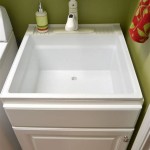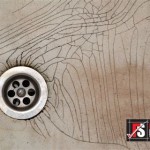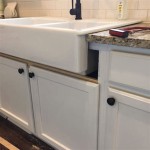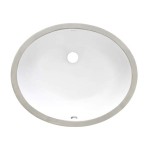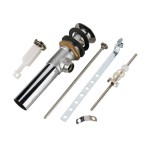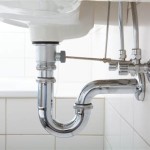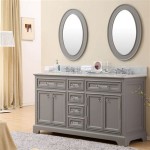How to Clean Gunk Out of a Sink Drain
A clogged sink drain is a common household nuisance. The accumulation of hair, grease, soap scum, food particles, and other debris inevitably leads to slow draining or, in the worst cases, a complete blockage. Addressing the problem promptly is crucial to prevent further plumbing issues and maintain a hygienic environment. Several methods, ranging from simple solutions to more involved procedures, can be employed to effectively remove the gunk from a sink drain. This article provides a detailed guide to these techniques.
Before attempting any cleaning method, it is important to assess the severity of the clog. If the sink is completely blocked and water is pooling, more aggressive methods may be required. For slow-draining sinks, milder approaches can often suffice. Always wear appropriate safety gear, such as gloves, to protect hands from potentially harmful cleaning agents and bacteria present in the drain.
Boiling Water
The simplest and often most effective first step in clearing a clogged drain is to use boiling water. This method is particularly useful for clogs caused by grease and soap scum, which melt relatively easily when exposed to high temperatures. To begin, carefully pour a kettle or pot of boiling water directly down the drain.
It is crucial to exercise extreme caution when handling boiling water to avoid burns. Pour the water slowly and steadily, allowing it to work its way down the drain. If the drain is completely blocked and the water begins to pool, stop pouring and allow the water to dissipate before adding more. The heat from the boiling water helps to loosen and dissolve the gunk, allowing it to flow more freely through the pipes.
After pouring the boiling water, wait a few minutes to see if the drain clears. If the water drains more quickly but the clog persists, repeat the process. Multiple applications of boiling water may be necessary to completely dissolve stubborn grease and soap buildup. If boiling water alone does not solve the problem, consider moving on to other methods.
It is important to note that boiling water should not be used on PVC pipes. The high temperature of the water can soften or even melt PVC, potentially causing damage to the plumbing system. Older metal pipes are generally safe for this method, but always exercise caution and monitor the pipes for any signs of damage or leakage.
Baking Soda and Vinegar
A combination of baking soda and vinegar creates a natural and effective cleaning solution for clogged drains. This method is a safer alternative to harsh chemical drain cleaners and can be used on both metal and PVC pipes. The reaction between baking soda and vinegar produces carbon dioxide, which helps to dislodge the gunk and break down the clog.
To use this method, start by pouring about one cup of baking soda down the drain. Follow this with one cup of vinegar. Quickly cover the drain with a plug or cloth to contain the fizzing reaction. The mixture will bubble and foam, working to dissolve the debris in the drain. Allow the mixture to sit for about 30 minutes.
After 30 minutes, flush the drain with hot water. The hot water helps to wash away the loosened debris and clear the remaining residue. If the drain is still slow, repeat the baking soda and vinegar treatment. This method can be used multiple times without causing damage to the pipes. For particularly stubborn clogs, let the baking soda and vinegar mixture sit overnight before flushing with hot water.
For enhanced cleaning power, try adding a half cup of salt to the baking soda before pouring it down the drain. The salt acts as an abrasive, helping to scrub away debris and increase the effectiveness of the cleaning solution. Remember to always follow up with a thorough flush of hot water to remove any remaining residue.
Plunger
A plunger is a simple but effective tool for clearing clogged drains. The suction created by the plunger dislodges the gunk and forces it through the pipes. There are two main types of plungers: cup plungers and flange plungers. Cup plungers are best for flat surfaces like sinks and tubs, while flange plungers are designed for toilets. For sink drains, a cup plunger is the appropriate choice.
Before using a plunger, ensure there is enough water in the sink to cover the cup of the plunger. If there is not enough water, add some to create a seal. The seal is essential for creating the necessary suction. If the sink has an overflow drain, cover it with a wet cloth to prevent air from escaping, maximizing the plunger's effectiveness.
Place the cup of the plunger firmly over the drain opening, ensuring a tight seal. Push and pull the plunger up and down vigorously, maintaining the seal throughout the process. Continue plunging for several minutes, checking periodically to see if the water is draining. If the water starts to drain, continue plunging to fully clear the clog.
If the plunger is not effective after several minutes of use, try adding some petroleum jelly around the rim of the plunger to improve the seal. This will help to create a stronger suction and may dislodge the clog. Alternatively, consider using a different method to clear the drain.
Drain Snake (Plumbing Snake)
A drain snake, also known as a plumbing snake or auger, is a flexible tool used to physically remove stubborn clogs from drains. It consists of a long, flexible metal cable with a corkscrew or brush-like tip that can be inserted into the drain to break up or retrieve the clog. Drain snakes come in various lengths and sizes, suitable for different types of drains.
To use a drain snake, carefully insert the tip of the snake into the drain opening. Slowly feed the cable down the drain, rotating the handle as you go. The rotating action helps the snake to navigate bends in the pipes and reach the clog. When you encounter resistance, continue to rotate the handle while pushing the snake forward. This will either break up the clog or allow the snake to hook onto it.
Once you have hooked onto the clog, slowly pull the snake back out of the drain. Be prepared for the possibility of pulling out a mass of hair, grease, and other debris. Dispose of the debris properly. If the drain is still clogged, repeat the process until the water drains freely.
When using a drain snake, it is important to avoid forcing the cable too aggressively, as this can damage the pipes. If you encounter significant resistance, try rotating the snake in the opposite direction or removing it entirely to clear any debris from the tip. Regular cleaning of the drain snake is essential to maintain its effectiveness and prevent the spread of bacteria.
P-Trap Removal and Cleaning
The P-trap is a U-shaped bend in the drainpipe located beneath the sink. Its purpose is to trap debris and prevent sewer gases from entering the home. Over time, the P-trap can accumulate a significant amount of gunk, leading to clogs. Removing and cleaning the P-trap is a more involved process but can be highly effective in clearing stubborn drain problems.
Before removing the P-trap, place a bucket or container beneath it to catch any water or debris that may spill out. Loosen the slip nuts that connect the P-trap to the drainpipes. These nuts can often be loosened by hand, but pliers may be necessary if they are tightly secured. Once the slip nuts are loose, carefully remove the P-trap.
Empty the contents of the P-trap into the bucket. Inspect the P-trap for any accumulated debris, such as hair, grease, or food particles. Use a wire brush or a small tool to remove any stubborn gunk. Rinse the P-trap thoroughly with water to ensure it is completely clean.
Once the P-trap is clean, reassemble it by connecting it to the drainpipes and tightening the slip nuts. Ensure the nuts are snug but not overtightened, as this can damage the pipes. After reassembling the P-trap, run water down the drain to check for leaks. If you notice any leaks, tighten the slip nuts further. If the leaks persist, the slip nuts or P-trap may need to be replaced.
This method should be approached with caution, as incorrect installation or overtightening of fittings can lead to leaks. If unsure, consulting a qualified plumber is advisable. Additionally, older plumbing systems may have corroded parts making removal and reassembly more difficult and potentially damaging.
Chemical Drain Cleaners
Chemical drain cleaners are a readily available option for clearing clogged drains, but should be used with caution. These cleaners contain harsh chemicals that can dissolve gunk but can also damage pipes and pose health risks. It is crucial to carefully follow the manufacturer's instructions when using chemical drain cleaners.
There are two main types of chemical drain cleaners: acidic and alkaline. Acidic drain cleaners are typically used to dissolve hair and grease, while alkaline drain cleaners are more effective at breaking down soap scum and mineral deposits. Choose the appropriate type of drain cleaner based on the suspected cause of the clog.
Before using a chemical drain cleaner, wear appropriate safety gear, such as gloves and eye protection. Pour the recommended amount of cleaner down the drain and allow it to sit for the specified time. Avoid using more cleaner than recommended, as this can damage the pipes. After the waiting period, flush the drain with plenty of water to remove the cleaner and dissolved debris.
It is important to note that chemical drain cleaners should not be used as a first resort. Safer and more environmentally friendly methods, such as boiling water, baking soda and vinegar, or a plunger, should be attempted first. Chemical drain cleaners should only be used if other methods have failed. Furthermore, mixing different types of chemical drain cleaners is extremely dangerous and can result in toxic fumes or explosions.
Regular use of chemical drain cleaners is not recommended, as they can corrode pipes over time. Consider using enzymatic drain cleaners as a safer alternative. Enzymatic cleaners contain enzymes that break down organic matter without harming the pipes. These cleaners are gentler but may require more time to work.

How To Clean A Clogged Sink Remove Stopper

Sink Drains How To Clean Hair And Accumulated Gunk Homepro Inspections

How To Clean The Gunk Around Sink Drain Ask Anna

How To Unclog Clean A Bathroom Sink Drain 3 Methods

How To Unclog A Bathroom Sink Hana S Happy Home

Sink Drains How To Clean Hair And Accumulated Gunk Homepro Inspections

What Is Black Sludge In A Sink Drain Birnie Plumbing Drains

Quick Dirty Way To Clean A Clogged Sink Drain Stopper No Tools

How To Clean The Gunk Around Sink Drain Ask Anna

How To Clean Kitchen Sink Remove Gunk From Deep Inside Drain No More Smells Express Co Uk
